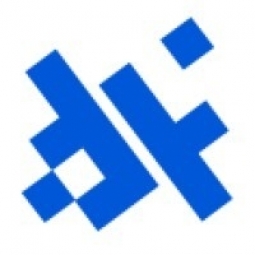Technology Category
- Functional Applications - Manufacturing Execution Systems (MES)
Applicable Industries
- Automotive
- Mining
Applicable Functions
- Procurement
- Quality Assurance
Use Cases
- Additive Manufacturing
- Traffic Monitoring
Services
- System Integration
- Training
About The Customer
General Pattern is a 90-year-old company that specializes in prototyping, tooling, and rapid manufacturing. The company, headquartered in Blaine, Minnesota, initially worked for toy companies like Tonka, Hasbro, and Mattel. However, as the industry shifted, so did General Pattern, focusing on the automotive industry and later diversifying its services for a wide range of clients in various markets. Today, the company has over 150 employees, operates out of twelve facilities, and offers a wide range of capabilities including CNC milling, injection molding, thermoforming, foam molding, and more.
The Challenge
General Pattern, a prototype, tooling, and rapid manufacturing company, faced a challenge when one of its clients from the consumer products industry required a more efficient, faster, and cost-effective method for creating prototypes and end-use parts than traditional manufacturing methods. The company decided to invest in HP’s Multi Jet Fusion (MJF) 3D printing technology, which led to a surge in orders. This influx of orders necessitated a more efficient way to manage front-end processes like quoting and order entry. General Pattern sought a software solution that was easy to use, minimized staff training, and was familiar with the nuances of HP’s technology to develop accurate and competitive pricing models.
The Solution
General Pattern chose DigiFabster's software solution after a demonstration of its capabilities. The company was particularly impressed with the software's ability to quickly create a dedicated intranet page for a specific client and its ease of configuration for pricing. DigiFabster's experience with HP’s technology and its software-as-a-service (SaaS) business model were also key factors in the decision. The software allowed General Pattern to mimic their offline pricing models in almost any scenario. The company quickly invested in and implemented the new online quoting and order entry software solution, tailoring it to their specific needs and communicating this new capability to their customer.
Operational Impact

Case Study missing?
Start adding your own!
Register with your work email and create a new case study profile for your business.
Related Case Studies.

Case Study
Integral Plant Maintenance
Mercedes-Benz and his partner GAZ chose Siemens to be its maintenance partner at a new engine plant in Yaroslavl, Russia. The new plant offers a capacity to manufacture diesel engines for the Russian market, for locally produced Sprinter Classic. In addition to engines for the local market, the Yaroslavl plant will also produce spare parts. Mercedes-Benz Russia and his partner needed a service partner in order to ensure the operation of these lines in a maintenance partnership arrangement. The challenges included coordinating the entire maintenance management operation, in particular inspections, corrective and predictive maintenance activities, and the optimizing spare parts management. Siemens developed a customized maintenance solution that includes all electronic and mechanical maintenance activities (Integral Plant Maintenance).

Case Study
Monitoring of Pressure Pumps in Automotive Industry
A large German/American producer of auto parts uses high-pressure pumps to deburr machined parts as a part of its production and quality check process. They decided to monitor these pumps to make sure they work properly and that they can see any indications leading to a potential failure before it affects their process.

Case Study
Underground Mining Safety
The goal was to produce a safety system to monitor and support underground mining operations; existing systems were either too simple (i.e. phone line) or overly complex and expensive, inhibiting deployment, and providing little-to-no support in event of an accident. Given the dangerous nature of the mining work environment and the strict regulations placed on the industry, the solution would have to comply with Mine Safety and Health Administration (MSHA) regulations. Yet the product needed to allow for simple deployment to truly be a groundbreaking solution - increasing miner safety and changing daily operations for the better.










